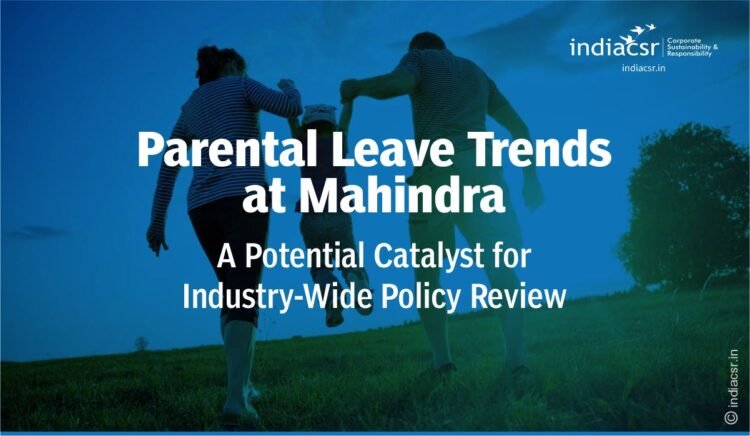Recent data from the automotive giant raises questions about parental leave policies and their impact on employee retention
MUMBAI (India CSR): Recent findings on parental leave trends within Mahindra and Mahindra Limited, one of India’s largest automotive companies, have sparked discussions that could potentially lead to an industry-wide review of parental leave policies.
Mahindra & Mahindra Ltd, founded in 1945, is the flagship Company of the Mahindra Group. Its core business is mobility products and farm solutions. The company has more than 2,60,000 employees and a presence in over 100 countries.
Leave Trends: Employees versus Workers
The internal review at Mahindra and Mahindra unveiled significant disparities in the return to work and retention rates of permanent employees versus permanent workers who took parental leave in the 2022-2023 financial year. While the return to work rates for permanent employees averaged at a commendable 97%, no permanent workers availed of parental leave during the same period.
Gender Gap in Return to Work Rates
The review also brought to light a considerable gender gap in the return to work rates among permanent employees who took parental leave. While 100% of male employees returned to work after parental leave, only 60% of female employees did the same.
Employee Retention Post-Parental Leave
Interestingly, the retention rates, which represent the percentage of employees the company was able to retain post-parental leave, remained steady at 75% for both male and female permanent employees. This indicates that despite the differences in return to work rates, Mahindra and Mahindra has been successful in maintaining a stable employment situation following parental leave for permanent employees.
Industry-Wide Implications
These revelations have raised important questions about the parental leave policies of the company, particularly concerning permanent workers, and by extension, those of the entire Indian automotive industry. They highlight the urgent need for a comprehensive review and potential overhaul of parental leave policies to ensure they are inclusive, fair, and conducive to maintaining a balanced and diverse workforce.
As of now, Mahindra and Mahindra has yet to respond to these findings. However, their response and subsequent actions could set a precedent for other industry players, making this a situation worth keeping an eye on.
Parental Leave Trends at Mahindra and Mahindra: A Snapshot
| Key Facts | Mahindra and Mahindra Limited |
|---|---|
| Return to work rate (male employees) | 100% |
| Return to work rate (female employees) | 60% |
| The gender gap in return to work rates | 97% |
| Retention rate post-parental leave (male employees) | 75% |
| Retention rate post-parental leave (female employees) | 75% |
| Number of permanent workers who availed parental leave in FY 2022-23 | 0 |
| Gender gap in return to work rates | Yes |
| Consistency in retention rates post-parental leave | Yes |
| Potential implications | Industry-wide review of parental leave policies |
Employee Composition
The workforce at Mahindra and Mahindra Limited is diverse, consisting of a combination of permanent employees, temporary or casual staff, and contractual employees. Further understanding of the distribution of these categories can provide key insights into the company’s employment strategies and policies.
M&M has a workforce of 61,874 permanent and non-permanent employees.
Table: Overview of Workforce
| Employee Type | Number/Percentage |
|---|---|
| Permanent Employees | 23,495 |
| Temporary / Casual / Contractual Employees | 38,379 |
| Unionised Permanent Workforce | 91% |
| Permanent Women Employees | 833 |
91% of the permanent workforce unionized
This table reveals an interesting composition of Mahindra and Mahindra’s workforce. While the number of permanent employees is significantly lower than the count of temporary, casual, or contractual employees, it is important to note that a substantial 91% of the permanent workforce is unionised. Additionally, the number of permanent women employees stands at 833, showcasing the company’s commitment to gender diversity, though there is still room for improvement.





